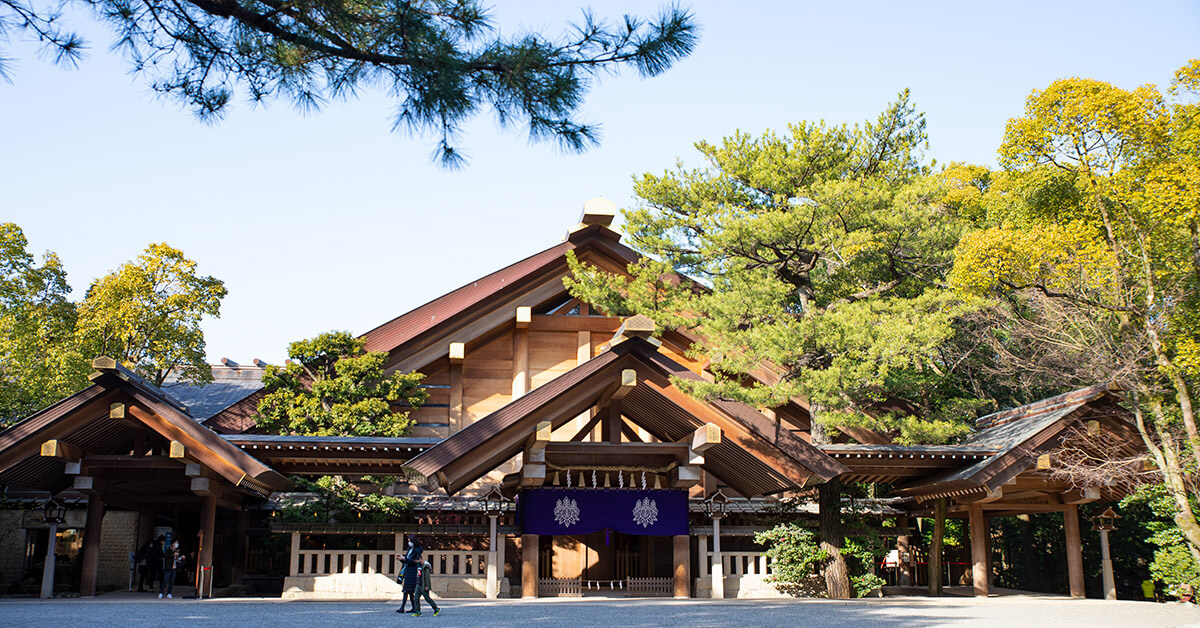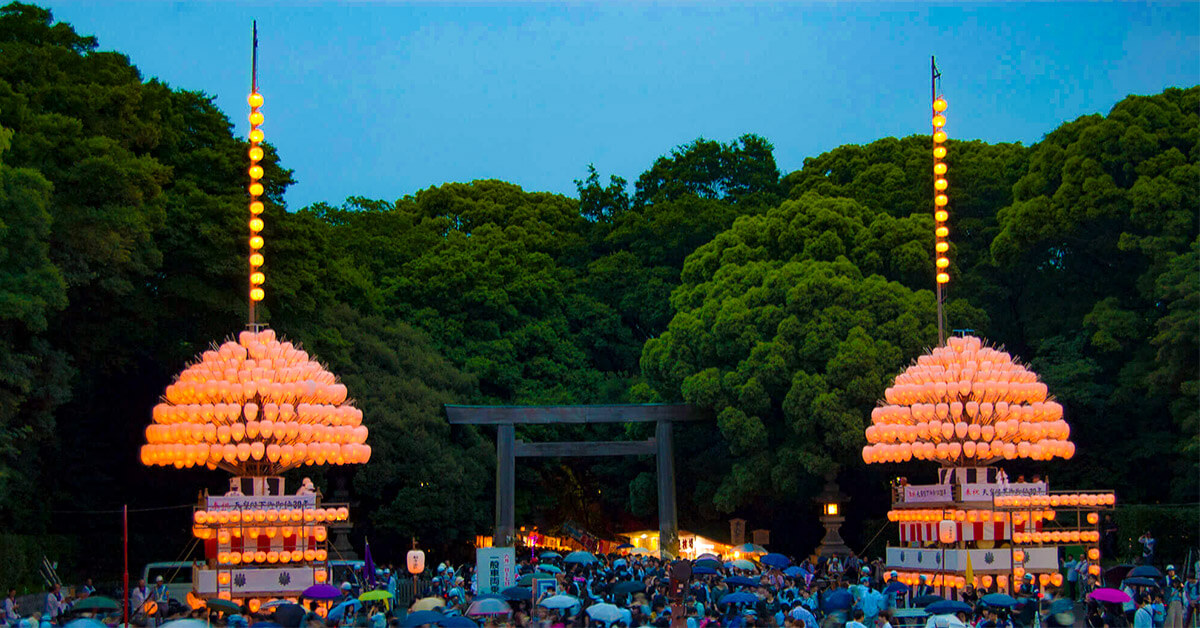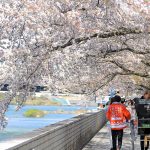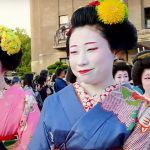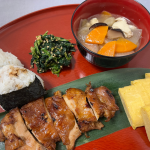Every February, a rather unique festival is held in the Owari Okunitama Jinja Shrine in Inazawa that would make even your grandmother blush! This festival is known as the Konomiya Hadaka Matsuri or Konomiya Naked Festival, and as the name suggests, men will do the Full Monty as they brave the cold and treat the locals and travelers alike to a display of partial nudity as part of this exceptional celebration. It is one of the oldest festivals in Japan, and along with the Saidaiji Hadaka Matsuri (Okayama Pref.) and the Tamaseseri Festival at Hakozaki Shrine (Fukuoka Pref.), is regarded as one of the three most popular naked festivals.
Thousands of local people and travelers make their pilgrimage to the Owari Okunitama Jinja Shrine in Inazawa City (Aichi Pref.) to rid themselves of bad luck and to get some good luck for the year ahead. Treat yourself to something a little different as we walk you through the infamous Hadaka Matsuri, the Naked Man Festival.

Article Contents
What Are The Origins of This Festival Au Naturel?
The Hadaka Matsuri (its official name is Naoi Shinji) is a Shinto ritual dating back to 767 AD, during the Nara Period.
It all began when the then regent governor, Taishi Shotoku ordered the priests of the Kokubun-ji shrines to perform cleansing ceremonies to rid the Owari region (now the prefecture of Aichi) of plagues and calamities.
The villagers of Konomiya took this order as an implication to establish their own rite. You might think that thousands of naked men running around is bizarre, but it used to be even odder; The villagers of Konomiya captured and forced a man from outside the village to be the Shin-Otoko (lit. “man of god”). This man was offered as a human sacrifice (Hitomigoku) to Owari Shosha (Konomiya Shrine). There are much better excuses to strip down, as we’re sure you’d agree!
Thankfully we’ve moved on since then, and due to the brutality of the rite and what is now considered disturbing acts that took place, the festival was declared illegal by the Owari clan head, Tokugawa Munekatsu in 1744 (nearly a thousand years later). However, in the early Meiji period it was again restored, but modified into something that is considered much “more civilized”. Let’s have a look at how civilized it has become.

What Became of The Sacrifice?
Nowadays, the Shin-Otoko or Naoi-Nin as he is also known, doesn’t have to look forward to any forms of barbarism as part of this festival, and is selected from a group of volunteers who just can’t wait to get their kit off. During the 3 days up to the festival, the Shin-Otoko remains in solitude and prayer. His diet is based only on white rice, pickles and tea.
While a thousand years ago we are sure there was little concern for the welfare of the Shin-Otoko, nowadays for health and safety reasons the Shin-Otoko shaves all his body hair from head to toe, including even the eyebrows, as a measure of prevention against potential accidents, such as hair pulling, etc.
Who Are The “Unlucky Men”?

The “unlucky men” participating in the Hadaka Matsuri are strictly men, who are mostly of the age of 25 or 42, which are considered unlucky for men (Yakudoshi) in Japan.
These participants are dressed in a white cotton loincloth called Fundoshi and white socks called Tabi. These men share the same objective: to get rid of bad luck by touching the Shin-Otoko and transferring it to him. To fight against the freezing February, they drink a good amount of alcohol throughout the whole event. This can lead to a bit of rowdy behavior on the day, as we will see.
What Happens on the Day?
On the day of the event, the Konomiya Jinja Shrine is filled with people from the early morning hours. Many people come here to receive prayers to fend off evil, or receive a piece of a Naoi-Gire (a kind of talisman in the form of a colored cloth strip). The first to arrive are women and the elderly. Since they cannot participate, they go to the temple where the Shin-Otoko receives them to bless them and absorb their evils.

Before the “unlucky men” offerings parade, a 4-ton Okagami Mochi (a gigantic rice cake) is brought to the temple by several men, the purpose of which is revealed later on in the celebrations. The regular Kagami Mochi is much smaller and can be found in households around New Year. It is believed to prevent house fires or other domestic disasters for the year to come.
At around 15:00, groups of “unlucky men” advance through the streets of the city carrying with them an offering called Naoi-Zasa, which they swing, spin and climb on while shouting: Wasshoi! Wasshoi! This offering consists of a large trunk or several large and elongated bamboo trunks, to which they tie the Naoi-Gire on which they write their age and wishes for the new year. It is said that if you receive one of these cloth strips it will bring you good luck.

Meanwhile, in the sanctuary, the Shin-Otoko protectors (former Shin-Otoko of past years) gather to discuss the final details for the rescue of the Shin-Otoko.
After all the groups of “unlucky men” have given their offerings to the temple, the last ones to arrive are the patrol of “water throwers” called Tewo Ketai who are responsible for throwing ceremonial water into the crowds.

Everyone waits for the appearance of the Shin-Otoko. Nobody knows exactly when he will appear, but it’s usually between 16:30 and 17:00.
The climax of the event comes when the Shin-Otoko appears completely naked in the vicinity of the sanctuary. He is guarded by ex-Shin-Otoko. At that moment he is “persecuted” and surrounded by the mass of “unlucky men” who begin to push each other to reach the Shin-Otoko and touch him to pass on their bad luck. The Shin-Otoko is hit, slapped, kicked and crushed as he attempts to fulfil his own objective to reach the interior of the sanctuary.
The Tewo Ketai throw buckets of cold water to disperse the “unlucky men ” away from the Shin-Otoko and his protectors to help prevent any injuries from the violence of the crowd.
Almost reaching the inner doors of the temple, the leader of the Shin-Otoko protectors comes to the rescue. Half-naked and with a white rope tied around his waist, he begins to move over the “unlucky men” in any way he can. Once the leader of the Shin-Otoko’s protectors makes contact with the Shin-Otoko, the other protectors stretch out the white rope to drag both inside the temple. The tension intensifies. If things get tough for the leader, exhausted by the great force of the onslaught of half-naked men that does not let the Shin-Otoko escape, he is relieved by another protector.
After the huge efforts of the protectors, they manage to get the Shin-Otoko inside the temple very much alive, but perhaps not totally intact! Once inside, with the protectors and the staff of the event, the Shin-Otoko greets the people from within the sanctuary. And with this, the main event ends.
But Wait, There’s More
Around 3:00 in the morning of the next day, there is another ceremony called Yonaoi-Shinji, which is known by very few people. In this ceremony, the Shin-Otoko carries a Tsuchi-Mochi (lit. earth rice cake) tied to his back. And with the help of two priests he walks in circles several times around the sacred place. With this, all the people’s bad luck collected by the Shin-Otoko is transferred directly to the Tsuchi-Mochi. Finally, it is then buried in a secret place in a nearby forest.
It’s Time To Cut The Okagami Mochi
Hours after that, at around 8:00 in the morning, one last event is held. In this event the Okagami Mochi (rice cake) that is brought to the shrine at the beginning of the celebrations, will be cut and distributed among all the people attending that day. It is said that if you eat a piece of that mochi you will not get sick in the summer of that same year. Every year a multitude of people stand in line to buy a piece of this mochi. Also on this day the Shin-Otoko will make an appearance to greet the people again. Many take the opportunity to take pictures with him or for him to pick up their children.
Handy Tips
- Wrap up warm! Inazawa is very cold this time of year and any number of naked men will not protect you from that.
- It’s not necessary to bring food with you. As in all Matsuri (Japanese festivals), you will find a wide variety of food stalls that sell all sorts such as tornado potatoes, meat skewers, okonomiyaki, chocolate bananas, castellas, etc.
- Despite being a “more civilized” ritual than before, there can still be very violent behavior among the participants. Due in part to the effects of alcohol and also possibly because of the heat of the moment. The vast swaths of people who attend this event can sometimes cause moments of danger and end in tragedy like in 2018 when a participant died. Be sensible, especially if you are going to actually participate.
The Naked Man Festival (裸祭り)
Opening Hours: 15:00 – 18:00
Address: 1-1-1 Konomiya, Inazawa City, Aichi Prefecture
Admission Price: Free
Access: From Nagoya station there are 2 train lines that go to Inazawa, Meitetsu and JR Tokaido.
Meitetsu line: Take the Meitetsu train line to the Konomiya station. Go by the west exit, take the underground passage on the left to cross to the east side of the station. After climbing the stairs, walk 5 minutes northeast to the Owari Okunitama Shrine (Konomiya Jinja Shrine).
JR Tokaido Line: Take the JR Tokaido train line to Inazawa station. From there, it’s 15 minutes on foot.
Website (Japanese only) | Google Maps
Photo credit: Elisabeth Llopis @ellpcreative
Did you enjoy this article?
Make sure to also check out our other posts about Nagoya and trust us if we say Nagoya is not boring!
Be sure to follow us on Facebook for new articles every week, and see our Instagram for pictures and stories about Nagoya!
Tag us 📲
If you have any pictures or comments about the Hadaka Matsuri, share them with us on social media by tagging #nagoyaisnotboring


